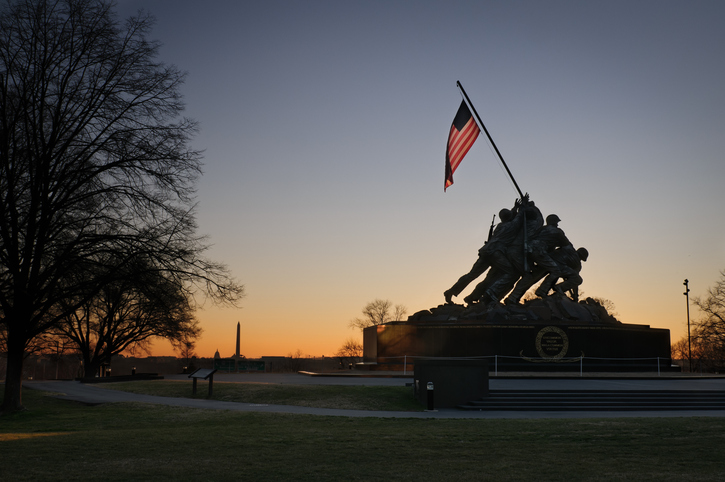Battle of Iwo Jima
If you visit the wall of Remembrance at Paradise Valley Estates you’ll likely recognize picture 21, one of the most iconic images of World War II. The battle of Iwo Jima, (19 February – 26 March, 1945), was a major battle in which the United States Marine Corps landed on and eventually captured the Island of Iwo Jima from the Japanese Imperial Army during World War II.
The American invasion, designated Operation Detachment, had the goal of capturing the entire island, including the three Japanese-controlled airfields to provide a staging area for attacks on the Japanese main islands. This five-week battle comprised some of the fiercest and bloodiest fighting of the War in the Pacific.
The Japanese Army positions on the island were heavily fortified with a dense network of bunkers, hidden artillery positions, and 11 miles of underground tunnels. Of the 21,000 Japanese soldiers on Iwo Jima at the beginning of the battle, only 216 were taken prisoner. The Marines sustained 25,000 casualties and more than 6,000 deaths.
After the heavy losses incurred in the battle, the strategic value of the island became useless to the Army as a staging base and to the Navy as a fleet base. However, the Seabees rebuilt the landing strips, which were used as emergency landing strips for B-29s. By the end of the war 2,400 B-29 bombers carrying 27,000 crewmen had made emergency landings on the island. Warren MacQuarrie, Don Reh, and seven past PVE residents participated in the battle.
Joe Rosenthal’s Associated Press photograph of the raising of the U.S. flag atop the 554 ft. Mount Suribachi by six U.S. Marines has become iconic. He won the Pulitzer Prize in 1945 and the picture was used in the design of the Marine Corps War Memorial dedicated in 1954.



